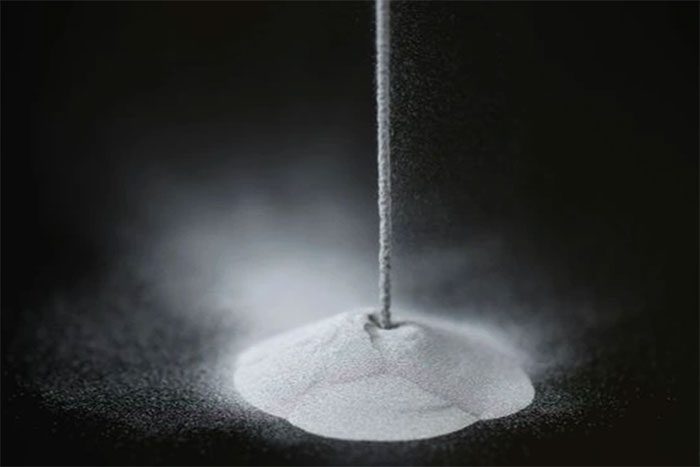The use of the GRX-810 alloy for manufacturing aircraft and spacecraft components has brought significant benefits to the entire U.S. economy.
Recently, the National Aeronautics and Space Administration (NASA) invested in a superalloy enhancement as part of its Technology Transfer Program. This superalloy is called GRX-810, which functions as a material capable of withstanding high temperatures and is suitable for 3D printing.

NASA’s GRX-810 superalloy is provided to component manufacturers in the aerospace and space industries (Photo: NASA).
The GRX-810 was initially conceptualized by NASA engineers by combining computer modeling with a laser-based 3D printing process, which allows them to fuse metal pieces together, layer by layer.
Items manufactured with this material can endure various extreme conditions, including the temperatures found in space. As a result, it has significant potential for producing specialized equipment, primarily for aircraft and spacecraft.
As of now, only four U.S. companies are licensed to manufacture this superalloy.
Through a joint exclusive licensing agreement, these companies will be able to manufacture and sell GRX-810 to aircraft and rocket equipment manufacturers, as well as other companies within the aerospace supply chain.
In other words, the U.S. economy stands to benefit from this strategic decision, having invested in super materials amid the global “race” in space exploration.
According to a statement from NASA, the GRX-810 was initially developed for the purpose of manufacturing aerospace equipment, including liquid fuel injectors for rocket engines, combustion chambers, turbines, and components capable of withstanding temperatures over 1,093 degrees Celsius.
Tim Smith, one of the two researchers who developed the superalloy, stated that GRX-810 represents a new space and design process that helps humanity push beyond limits and strive for greater goals.
Dale Hopkins, Deputy Director of NASA’s Transformational Technology Project, noted that the advantages of jet engines and rocket components made from GRX-810 include significantly reduced operational costs by extending lifespan and improving overall fuel efficiency.
“The use of this alloy will benefit the fields of space exploration and aviation, promoting more sustainable development,” emphasized Mr. Hopkins.





















































